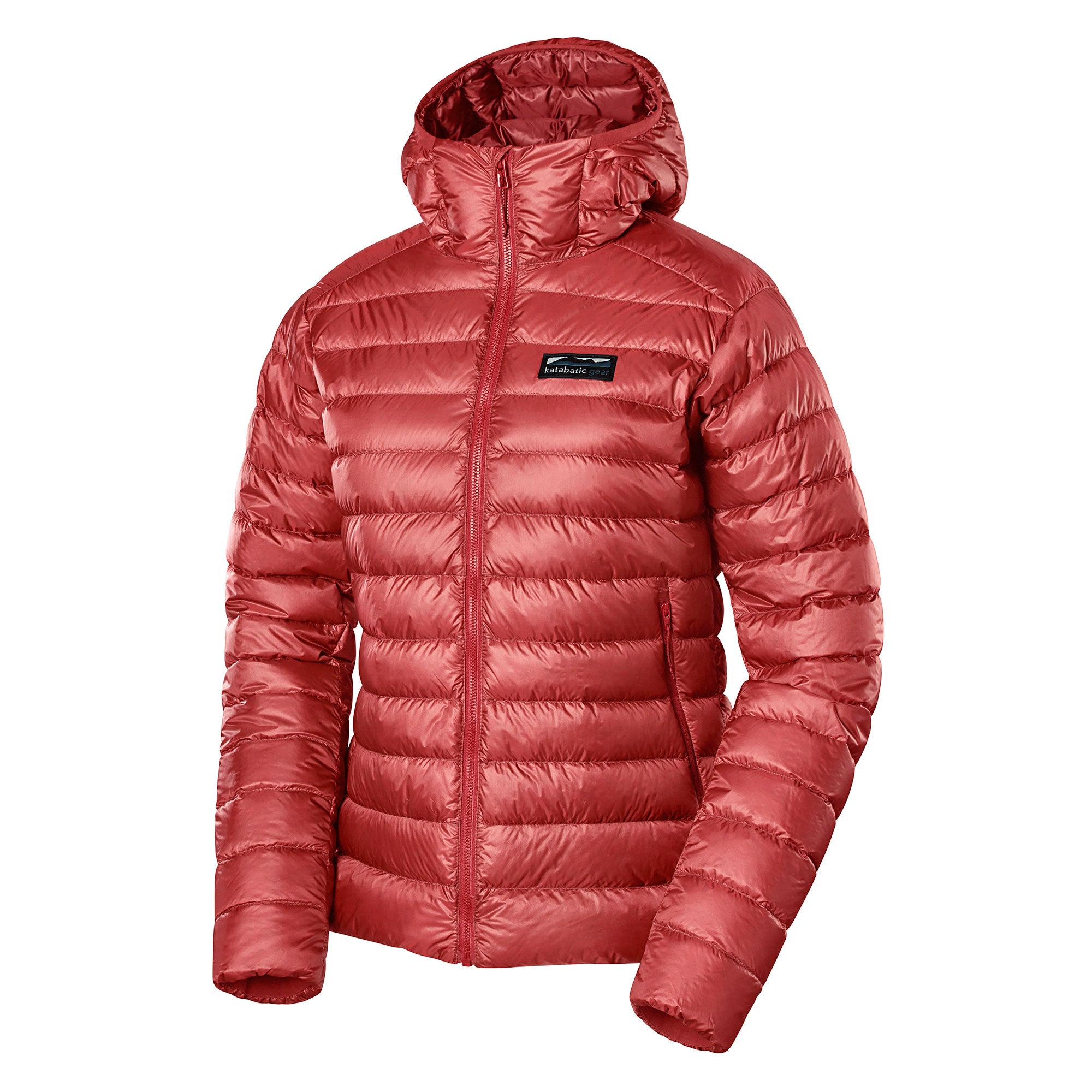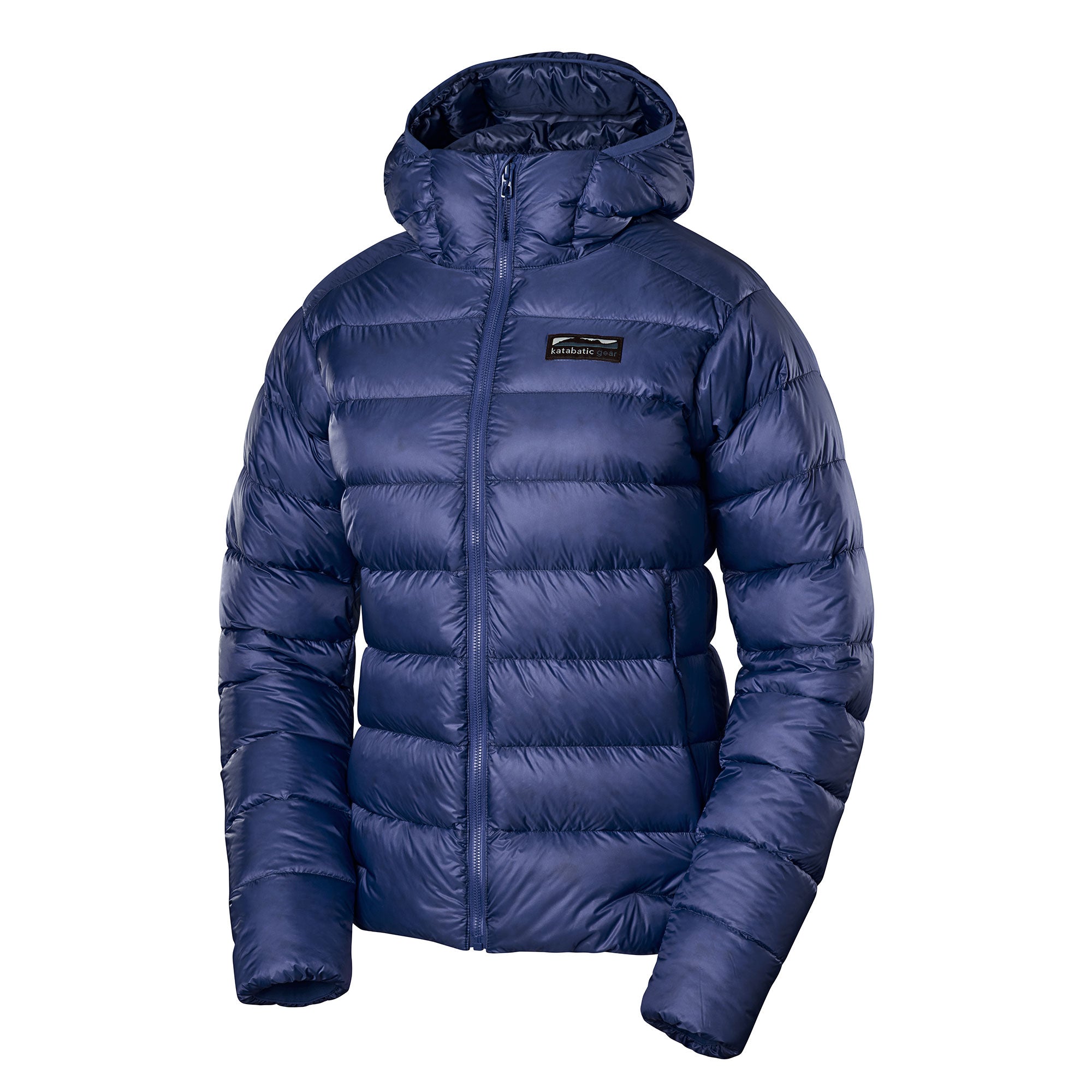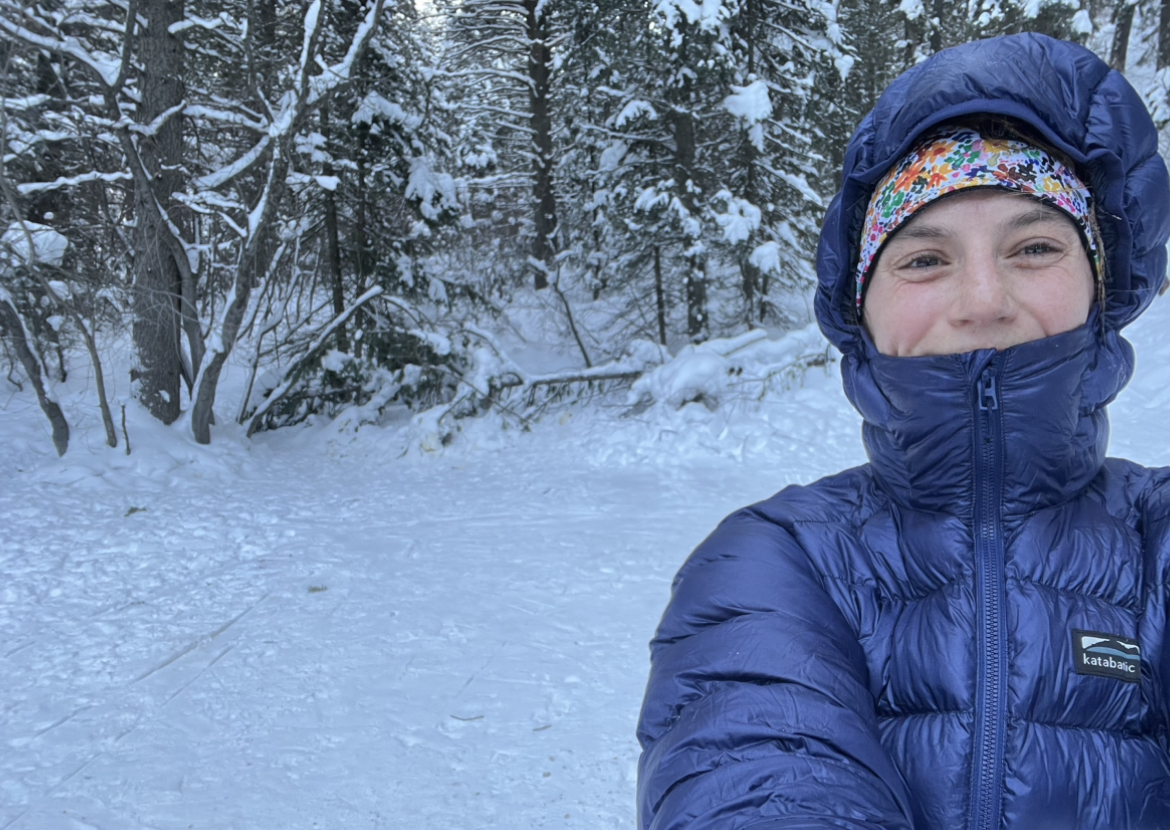Gear Review: Katabatic Tarn vs. Tincup
Katabatic Gear, best known for their ultralight quilts, just released two brand-new down jackets that strike an amazing balance between warmth, weight, and affordability: a thru-hiker’s trifecta.
A quality puffy jacket is a key piece of any thru-hiking kit. You can often spot a weathered thru-hiker by the number of patches they have on their well-loved insulating layer. On the John Muir Trail, I was easy to spot in my bright blue Arc’teryx puffy during chilly early morning miles, for warmth at night, and on any windy summit or high alpine pass. I’ve also been known to ball my jacket up and use it as a pillow in a pinch.
How do the new Katabatic Tarn and Tincup puffies stack up? Let’s find out.
Katabatic Tarn vs. Katabatic Tincup: What’s the Difference?
Though Katabatic’s two new puffies, the Tarn and the Tincup, have very similar designs and use the same materials, they are very different pieces.
The Tarn is a lighter-weight insulating layer that is perfect for shoulder season backpacking or as a layering piece during extremely cold but high-output activities.
The Tincup is heavier and loftier, making it more of a “stop” layer. By this, I mean that it’s perfect for largely stationary activities like camping, summits, and belaying, but I personally would not be able to wear it during any sort of exertion.
Both jackets are made with sustainable materials, important features like a cinchable hood and zipper chin guards, and high-quality 850+ fill-power goose down.
Katabatic Tarn Down Jacket: At a Glance

- MSRP: $269
- Weight: 8.0 – 10.2 oz
- Fill Weight: 2.9 – 3.9 oz
- Down fill: 850+ goose down
- Colors available: Red, grey, navy
Katabatic Tincup Down Jacket: At a Glance
- MSRP: $299
- Weight: 9.7 – 12.3 oz
- Fill Weight: 4.6 – 6.1 oz
- Down fill: 850+ goose down
- Colors available: Red, grey, navy
Circumstances of Review
I used these exclusively as my two puffies this winter. Most of my testing was done while backcountry skiing, which is a fairly similar output level to thru-hiking (though typically much colder). I also used the Tincup as my “stop” layer during a 12-hour race on the first weekend of February.
The testing ranged from using the lighter-weight Tarn as my singular downhill layer on warmer winter days to bundling up in the heavier Tincup during the coldest days in the mountains. I was able to thoroughly analyze warmth, breathability, and fit during my months of winter testing.
About Katabatic Gear
For over a decade, Katabatic Gear has been a thru-hiker fan favorite. They’re known for their ultralight quilts, which have won numerous awards from our site as well as others. Using the same ultralight yet quality-driven philosophy, Katabatic decided to take a crack at puffy jackets.
These two options are designed with incredible thought and attention to detail—and made specifically for thru-hikers and ultralight backpackers. From high-quality down fill to ultralight shell materials, these jackets are lightweight yet durable and warm.
Tarn and Tincup Down Jackets: Notable Features
Pertex Quantum Fabrics: Katabatic uses a 10D Peretex Quantum Ripstop as the outer shell. This is an extremely high-quality material, which protects the down from water and helps it keep loft. The inner shell is a 20D Pertex Quantum Taffeta, which is comfortable next to the skin and doesn’t get nearly as clammy as other down shells I’ve tested.
RDS Certified 850+ fill power Goose Down: This down fill is sourced responsibly through Allied Feather and Down. As a supplier of high-quality down fill, they put the welfare of animals and the environment first.
DWR Waterproof Treatment: The DWR treatment on the 10D shell does a great job of resisting water and keeping the down insulation lofty. There were plenty of times when I used the Tincup while sitting in the snow, and this moisture beaded right off the shell.
Cinchable Hood: Personally, this is a huge feature for me. I love to have a hood I can cinch around my face at night; which keeps me from having to bring a buff and/or fleece headband while backpacking with a quilt. A tight hood is an underrated way to retain warmth around your face, even in the coldest conditions.
Sustainability: Every piece of these puffies is designed with sustainability as a core focus. These jackets will last even the most avid adventurer for years.
Which Katabatic Puffy Should You Pick?

When packed into its pocket, the Tarn fits into my hiking fanny pack. Perfect for a chilly spring morning hike.
The Tarn excelled as an ultralight puffy for high-intensity activities in extremely cold weather. It would also be an excellent choice for a nighttime/morning layer on a backpacking trip where the temperature doesn’t dip below freezing.
With 2.9 ounces of 850-plus fill power down, it does provide a decent amount of warmth, but I did not find it suitable for extremely cold temperatures. It’s also great as a layering piece as part of a more robust alpine kit for more extreme adventures.
If I were doing a long trail during a “standard” time window, the Tarn could easily make its way into my pack.
The slightly heavier Tincup is better for more casual backpacking or hiking in extremely cold weather. The Tincup is too heavy to use while active. I had no problem layering with it during extremely cold runs or ski tours without sweating through it. However, the extra loft and warmth of the Tincup make it purely a “stop” layer for me.
I’m excited to bring this on mellow summer backpacking and camping trips, where I just want to be as warm as possible sitting around a fire with friends. I would also recommend this for winter backpacking and hiking, where at summits and camp you need an extremely warm layer to throw on immediately.
Tarn: Pros and Cons

Using the tarn during a single-digit temperature run this winter. As you can imagine, I stayed warm but did not overheat. This jacket is lightweight yet insulating enough for chilly early morning miles on trail.
Pros
- Trim fit for warmth.
- Cinchable hood.
- Extremely lightweight and packable.
- Big pockets for snacks and hand warmers.
Cons
- Not quite warm enough for an extreme cold puffy option.
- Not big enough to fit over more than one thin base layer (when ordering true to size).
Tincup: Pros and Cons

Using the Tincup as my “stop” layer during a long winter hike. I was still able to somewhat enjoy that cold bevy despite temperatures in the low teens.
Pros
- Extremely durable. I used this as an outer layer while backcountry skiing downhill, and the material did not tear even with a couple snags (however, I don’t recommend pushing this).
- Warm enough for a camp layer in extremely cold environments.
- Cinchable hood.
Cons
- Not as packable.
- Not breathable enough to use while engaging in high-exertion activities, even in the coldest weather.
A Note on Sizing

I liked sizing the Tarn a bit trimmer by selecting my normal size. This option is perfect to use is as a layering piece. If you want it to mostly be an outer layer, definitely size up.
Both jackets undoubtedly run small. Katabatic is aware that the fit on this first release of puffies is slightly tighter than ideal and is working on tweaking this in the future. I was made aware of this before testing, so I opted to try a medium in the Tarn and a large in the Tincup. I’m a medium in most styles across the board.
I was glad I picked two different sizes because of the jackets’ different intended uses. Opting for a snugger fit in the Tarn made it work better as a mid-layer under a lightweight shell or heavier jacket, while sizing up in the Tincup enhanced its functionality as an outer layer while stopped at camp or enjoying a view.
If you’re planning to use either of these jackets as a layering piece, I would recommend selecting your true size. However, if the intended use is to have a warm, roomy layer to throw on over all your layers at camp or on a summit, definitely size up.
Conclusion
Katabatic Gear absolutely knocked it out of the park with their first design of puffy jackets. I was happily warm all winter during a variety of activities with both the Tarn and Tincup. Though I can’t speak to their long-term durability, I was extremely pleased with the Tarn as an insulating layer for high-output activities and the Tincup as an ultra-warm “stop” layer for camp or a chilly summit.
Furthermore, for their price-to-warmth/weight ratio, both jackets are an incredible deal. I’m happy to recommend either one as a new puffy for this upcoming backpacking season.
Shop the Women’s Tarn Shop the Men’s Tarn
Shop the Women’s Tincup Shop the Men’s Tincup
Tarn: Compare To
Mountain Hardwear Ghost Whisperer Down Jacket Hoodie
- MSRP: $360.00
- Weight: 7.8 ounces
- Down fill: 800 fill power goose down
- Materials: 10D ripstop
- Men’s version here
Arc’teryx Cerium Down/Synthetic Hybrid
- MSRP: $360.00
- Weight: 7.2 ounces
- Down fill: European white goose down / core loft synthetic insulation
- Materials: arato 7 100% nylon
- Men’s version here
Tincup: Compare To
- MSRP: $399.00
- Weight: 14 oz
- Down fill: 800 fill power
- Materials: 100% recycled nylon DWR
- Men’s version here
- MSRP: $409.00
- Weight: 10.2 oz
- Down fill: 900 fill power
- Materials: Pertex Quantum nylon with DWR
- Men’s version here
The Katabatic Tarn and Tincup puffies were donated for purpose of review.
This website contains affiliate links, which means The Trek may receive a percentage of any product or service you purchase using the links in the articles or advertisements. The buyer pays the same price as they would otherwise, and your purchase helps to support The Trek's ongoing goal to serve you quality backpacking advice and information. Thanks for your support!
To learn more, please visit the About This Site page.


